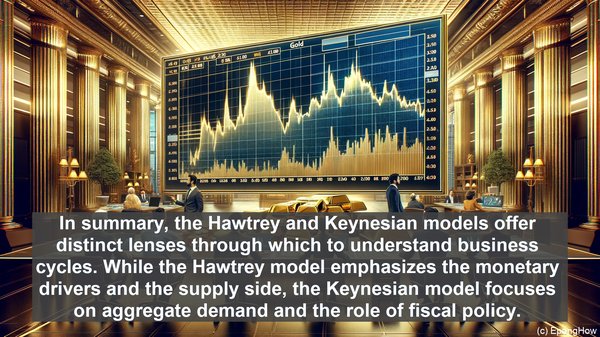Introduction: The Fascinating World of Business Cycles
Before diving into the details, let’s establish a foundation. Business cycles, the periodic fluctuations in economic activity, have captivated economists for centuries. They encompass booms, recessions, and everything in between. Understanding these cycles is crucial for policymakers, investors, and anyone interested in the economy’s dynamics.

The Hawtrey Model: A Monetary Perspective
The Hawtrey model, named after its creator Ralph Hawtrey, emphasizes the role of money in business cycles. It posits that fluctuations in the money supply, primarily through changes in bank lending, are the primary drivers of economic expansions and contractions. According to this model, an increase in the money supply stimulates investment and consumption, leading to a boom. Conversely, a decrease in the money supply tightens credit, dampening economic activity. The Hawtrey model also highlights the importance of interest rates, as they influence borrowing costs and investment decisions.
The Keynesian Model: The Power of Aggregate Demand
In contrast, the Keynesian model, developed by the renowned economist John Maynard Keynes, focuses on aggregate demand as the key determinant of business cycles. It argues that fluctuations in spending, particularly by households, businesses, and the government, drive economic fluctuations. According to Keynes, during a recession, when aggregate demand is low, the government should step in with increased spending to stimulate the economy. This concept, known as fiscal policy, is a cornerstone of the Keynesian model. Additionally, the Keynesian framework emphasizes the role of expectations and animal spirits, which can amplify or dampen economic fluctuations.

Assumptions and Limitations: Divergent Perspectives
While both models offer valuable insights, they differ in their underlying assumptions. The Hawtrey model assumes that prices and wages are flexible, adjusting quickly to changes in economic conditions. In contrast, the Keynesian model incorporates the notion of sticky prices, where prices and wages do not adjust immediately. This assumption has implications for how the economy responds to shocks. Additionally, the Hawtrey model places more emphasis on the supply side of the economy, highlighting the importance of factors such as productivity and resource allocation. The Keynesian model, on the other hand, focuses on the demand side, emphasizing the role of spending and government intervention.
Policy Implications: Different Approaches to Stabilization
The divergent perspectives of the Hawtrey and Keynesian models have implications for policy. The Hawtrey model suggests that monetary policy, through actions such as adjusting interest rates or open market operations, can be an effective tool for stabilizing the economy. By influencing the money supply, policymakers can potentially mitigate the severity of economic fluctuations. In contrast, the Keynesian model emphasizes the role of fiscal policy. During a downturn, the government can use measures such as tax cuts or increased spending to boost aggregate demand. The goal is to create a multiplier effect, where each dollar of government spending generates more than a dollar of economic activity.
